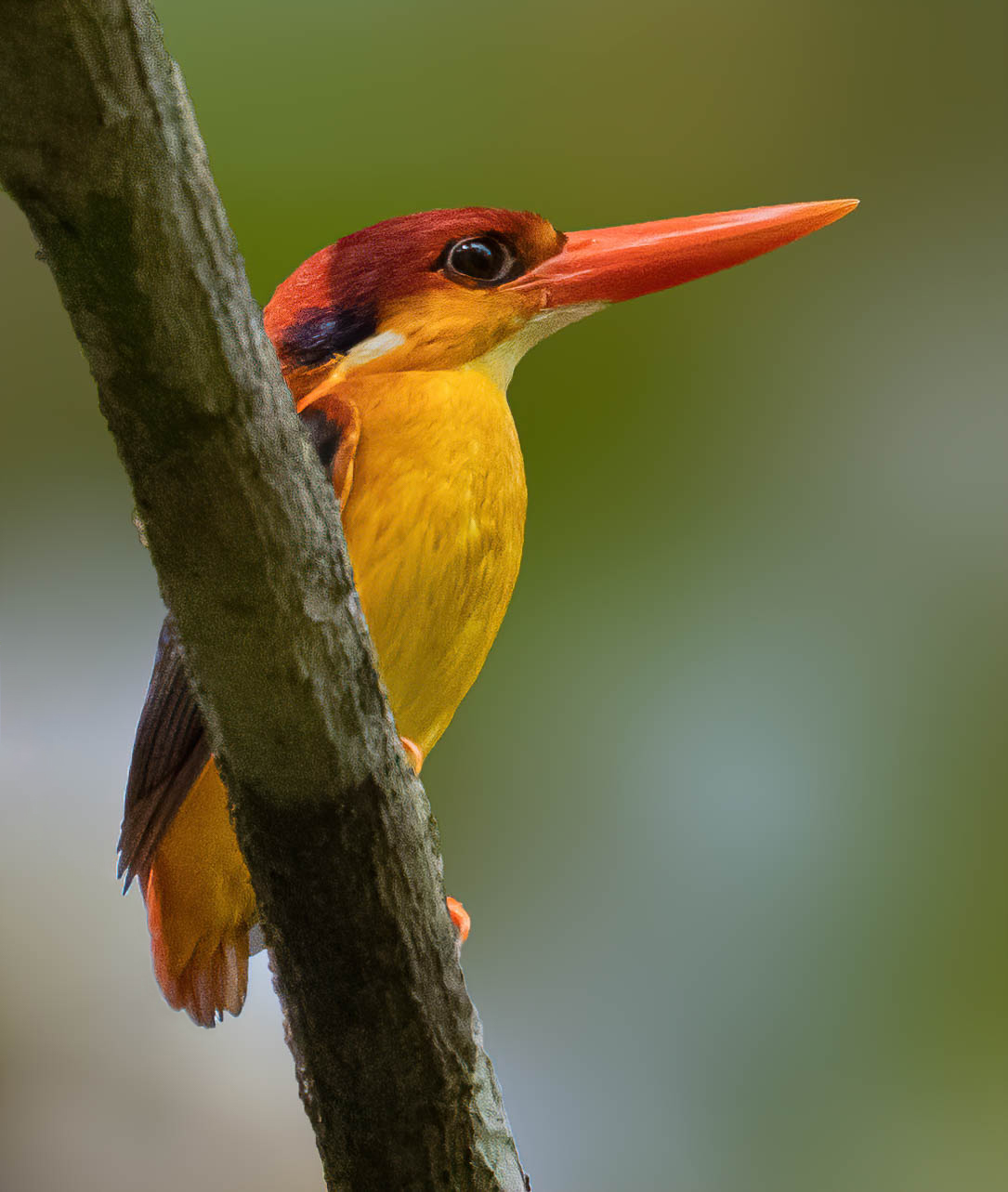Here is the list of 5 Common Kingfishers of Assam, India
Kingfishers are brightly colored small to medium-sized birds. As the name suggests, most of the kingfishers mainly feed on fishes. But some kingfishers feed on frogs and other aquatic invertebrates and also other insects like grasshoppers, mantises etc. Kingfishers have a cosmopolitan distribution with most species found in tropical regions of Africa, Asia and Oceania. They are also found in Europe. There are 114 species of birds in the Kingfisher family.
Common Kingfisher

Scientific Name: Alcedo atthis
IUCN Conservation Status: Least Concern
This is a resident breeder of Europe, Asia and North Africa. That is why another name of this species is Eurasian Kingfisher. This sparrow sized bird is not very common and omnipresent in Assam, India as the White Breasted Kingfisher. This bird is seen stalking for prey on the bank of river and other water bodies. They mainly feed on small fishes. Common Kingfisher has a special ability to spot an underwater fish. Therefore, they can catch a fish by diving into the water. Similar to the other species of kingfishers, its beak is long and strong. This bird is very popular among the bird watchers because of its fishing style. Common Kingfishers fish in shallow waterbody and they can fly very fast at a lower height.
Oriental Dwarf Kingfisher/Black Backed Dwarf Kingfisher

Scientific Name: Ceyx erithaca
IUCN Conservation Status: Least Concern
This pocket-sized kingfisher is very popular among the bird watchers. This bird is an inhabitant of tropical low land and breeds during the summer season in Assam, India. They feed on lizards, insects, spiders, fishes etc. This bird is endemic to Indian Subcontinent and Southeast Asia. This bird is popularly known as the “Color Bomb” or the “Flying Rainbow” due to its vibrant colors. Garbhanga Reserve Forest, Manas National Park, Rani Reserve Forest, Dehing Patkai National Park are some major habitats of this bird in Assam.
Pied Kingfisher

Scientific Name: Ceryle rudis
IUCN Conservation Status: Least Concern
The Pied Kingfisher is widely distributed in Asia and Africa. They breed anytime during the year. They feed on fishes and for this, they adapt a unique fishing style. This bird observes underwater fish by hovering over the water body. When a fish is spotted, it dives vertically closing the wings and catches the fish with its strong bill and eats at a safe place. They make nests near water bodies. Regular clutch of a ‘Pied Kingfisher’s’ eggs contain 3 to 6 eggs.
Stork Billed Kingfisher

Scientific Name: Pelargopsis capensis
IUCN Conservation Status: Least Concern
This resident kingfisher of Indian subcontinent and Southeast Asia is a little larger than the other three kingfishers mentioned above. As the other kingfishers, the ‘Stork Billed Kingfisher’ also nests near water bodies such as lakes, rivers etc. They feed on fishes, frogs and other aquatic invertebrates. This bird stalks for its prey mostly siting on unnoticeable perches of trees. The wings and the tail portion of an adult bird are blue and the back is green. Both the sexes are alike. They normally choose a particular area for regular fishing.
White Throated Kingfisher/White Breasted Kingfisher

Scientific Name: Halcyon smyrnesis
IUCN Conservation Status: Least Concern
This bird is widely distributed in the entire state of Assam, India. Their foods include fishes, frogs and other aquatic insects. Sometimes they are seen feeding other insects like grasshoppers, mantises etc. The ‘White Breasted Kingfisher’ mostly stalks for its prey on a branch of a tree near water bodies and catches it by diving into the water. As that of other kingfishers, the bill of the ‘White Breasted Kingfisher’ is also large and strong. This is why they can easily catch an underwater prey. They breed in the rainy season. This bird is the State bird of the state of West Bengal.
Click here fore more contents.
1 thought on “5 Common Kingfishers of Assam, India”